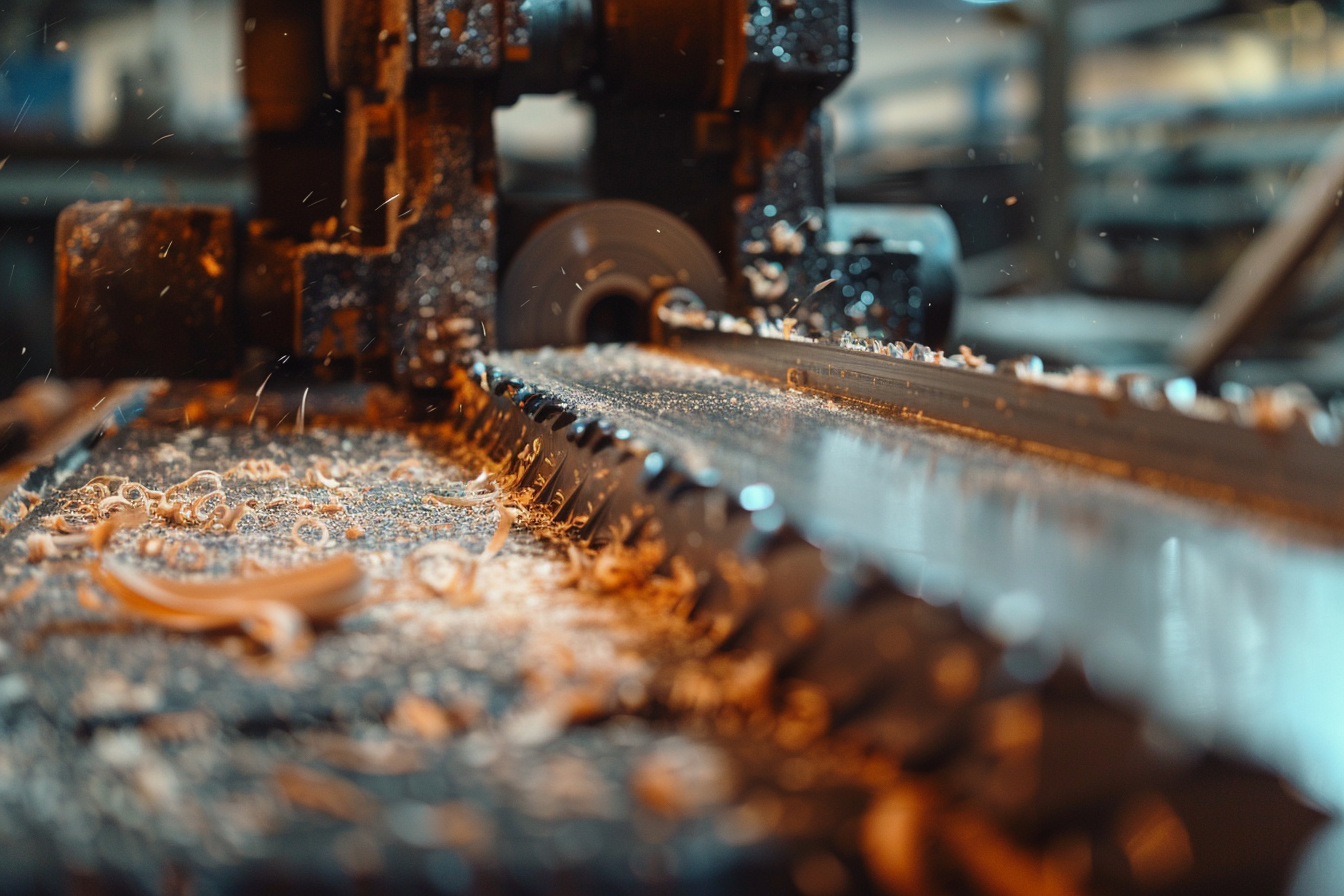The quality of your work with a scroll saw does not depend solely on your skill or the performance of your equipment. The choice of blade is also a determining factor, directly impacting the precision and finesse of your cuts. Faced with a variety of blades available on the market, selecting the most suitable for your project can be a real headache. This guide therefore offers you a methodical approach to identify the ideal blade, aligned with your specific fretwork needs.
Types of blades and their applications
Regular tooth blades: They are designed with uniformly sized teeth and are particularly suitable for straight cuts in thin materials. Excellent for precision work, they guarantee a smooth finish and are ideal for soft woods.
Cross-toothed blades: Offering a more aggressive cutting action, these blades are predestined for faster cuts and thicker materials. They reduce heating and are perfect for hardwoods or composite materials.
Spiral blades: Equipped with teeth all around their axis, they allow cuts to be made in all directions without having to turn the work. This choice is recommended for complex designs but may provide a less clean finish than other blade types.
Understanding Blade Specifications
When it comes to selecting a blade, understanding the specifications listed on the package is essential. This information will help you make a choice suited to your fretwork work.
- The number of teeth per inch (TPI): A primary criterion. A higher TPI indicates more teeth on the blade, which provides a finer but slower cut. Conversely, a low TPI allows for faster but less precise cutting.
- The width and thickness of the blade: These dimensions influence the blade’s ability to make straight cuts or tight curves. A thin and flexible blade will be preferred for delicate cuts and small radii, while a wide blade offers more stability for straight cuts.
- The type of material: The blades are made of different materials, such as high speed steel (HSS), carbon steel, or even bimetal. The properties of these materials determine the blade’s durability and resistance to wear, as well as its ability to cut certain types of materials.
Choose according to the material to cut
The nature of the material you plan to work with greatly influences the choice of blade. For soft woods, a fine-toothed blade provides a flawless finish, while hardwood will benefit from a blade with wider-spaced teeth to avoid clogging. Synthetic materials and non-ferrous metals often require specific blades, designed to minimize heating and wear.
Adapt the blade to the complexity of the pattern
Fretwork projects vary greatly in complexity and fine detail. For simple designs with long straight lines, a wide, stiff blade is ideal. On the other hand, more elaborate designs, with tight curves and fine details, require a thin and flexible blade, capable of negotiating narrow turns without breaking.
Maintenance and durability issues
Regular maintenance of your blades is mandatory to ensure their performance and longevity. Cleaning the blades after each use to remove residue and prevent them from becoming clogged is a recommended practice. Lubrication can also extend the life of blades and make cutting easier. In addition, learn to recognize the signs of wear to replace them at the right time, in order to avoid accidents or a deterioration in cutting quality.
Test before adopting
Despite rigorous selection, nothing beats direct experimentation. The specifics of each project, coupled with your personal working style, can influence the performance of a blade. So don’t hesitate to test different blades on scraps of materials similar to your project before making your final decision. This approach will allow you to refine your choice according to practical and real criteria.
Consider the cost factor
Although the temptation is great to opt for cheap blades to reduce costs, this saving can, in the long term, prove counterproductive. Investing in higher quality, more durable and efficient blades can reduce the frequency of replacements and provide a better fretwork experience. So evaluate value for money rather than price alone when making your choice.
Learn and evolve
Fretwork is an art that is perfected with time and experience. Each project brings its share of lessons, including in the choice and use of blades. Take the time to analyze your successes and failures to continually refine your selection criteria. Consulting dedicated forums, participating in workshops, or exchanging with other enthusiasts are all ways to enrich your knowledge and improve your techniques.
Choosing the most suitable blade for your scroll saw is a process that requires thought, knowledge and experimentation. By taking into account the different criteria presented and adopting a methodical approach, you will maximize your chances of finding the ideal blade, capable of transforming your ideas into masterpieces of precision and finesse.












